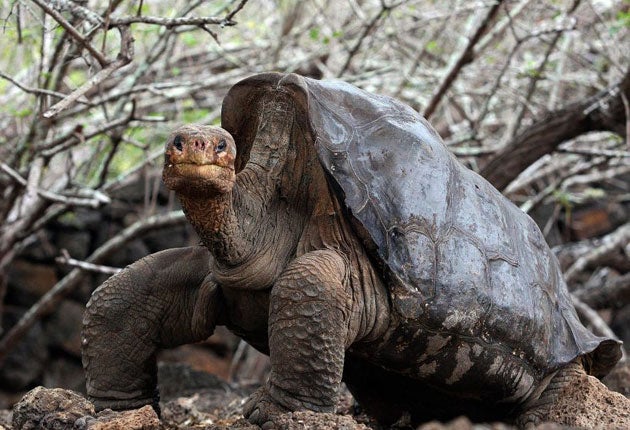More than 100 giant tortoises stolen from the Galapagos Islands
The animals were taken from a research facility

Your support helps us to tell the story
From reproductive rights to climate change to Big Tech, The Independent is on the ground when the story is developing. Whether it's investigating the financials of Elon Musk's pro-Trump PAC or producing our latest documentary, 'The A Word', which shines a light on the American women fighting for reproductive rights, we know how important it is to parse out the facts from the messaging.
At such a critical moment in US history, we need reporters on the ground. Your donation allows us to keep sending journalists to speak to both sides of the story.
The Independent is trusted by Americans across the entire political spectrum. And unlike many other quality news outlets, we choose not to lock Americans out of our reporting and analysis with paywalls. We believe quality journalism should be available to everyone, paid for by those who can afford it.
Your support makes all the difference.A large number of young giant tortoises have been stolen from a Galapagos Islands breeding facility.
Some 123 tortoises, which are a major tourist attraction on the Ecuadorian islands, were taken from Isla Isabela on Tuesday, the environment ministry confirmed.
An investigation has been opened into the theft, which could see the perpetrators receive a prison sentence of up to 10 years if caught.
“They were all taken at once, 123 in all,” Washington Paredes, a local politician, told AFP of the tortoises. “It was a robbery.”
He highlighted that the facility from which the tortoises were taken has little in the way of security, with no cameras or light sensors to catch or deter thieves.
Paredes said: “The turtles are just there. If somebody wants to go in by night and steal, they can.”
Giant tortoises are preyed on by wildlife traffickers – in June, 26 of them were returned to the Galapagos having been stolen and transported to Peru.
The Galapagos Islands, a volcanic archipelago 1,000km off the coast of Ecuador, are a protected habitat and were given Unesco World Heritage status in 1979.
Thanks to their isolated location, they host an enormously diverse array of plant and animal species, many of which are no longer found anywhere else on the planet – some 30 per cent of plants, 80 per cent of land birds and 97 per cent of reptiles exist only on the islands.
They are one of only two places where giant tortoises, the largest living species of tortoise, can be found, along with Aldabra, 700 km east of Tanzania in the Indian Ocean.
The Galapagos giant tortoise can live to well over 100 years old and weigh up to 417kg (65st 6lbs).
Charles Darwin visited the Galapagos in 1835; his observations of the islands’ species helped inspired his theory of evolution, in particular the way each of the sub species of giant tortoise have adapted to the particular conditions of the island on which they live.
Join our commenting forum
Join thought-provoking conversations, follow other Independent readers and see their replies
Comments